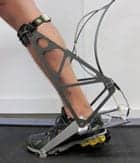
According to the release, NIH joins participation in the NRI with the National Science Foundation, the National Aeronautics and Space Administration, and the US Department of Agriculture. NIH has reportedly funded three projects to assist in developing “co-robots” that can help researchers, patients, and clinicians.
One of the three studies centers on the development of a novel platform for the exploration of robotic ankle exoskeleton control. The project reportedly aims to create an experimental platform for an assistive ankle robot to be used in patients recovering from stroke. The platform will target the ability to allow investigators to systematically test various robotic control methods and to compare them based upon measurable physiological outcomes. The test results, researchers say, will provide evidence for making more effective, less expensive, and more manageable assistive technologies.
In an effort to combat atrial fibrillation and its risk of stroke and heart disease, a second project aims to develop a co-robotic catheter designed to use novel robotic planning strategies to compensate for physiological movements of the heart and blood and that can be used while a patient undergoes an MRI. The researchers explain that co-robotic catheter could potentially increase accuracy and repeatability of atrial fibrillation ablation procedures.
The last of the projects will center on developing a co-robotic cane for the visually impaired. The cane is intended to provide enhanced navigation capabilities and relay key information about the environment to its users. The proposed cane will be engineered to use computer vision to recognize indoor structures such as stairways and doors, as well as detect potential obstacles. According to the release, to convey appropriate travel direction to the user, the cane will also use an interactive human-device interaction mechanism.
[Photo Credit: Steve Collins, Carnegie Mellon University]
[Source: National Institute of Biomedical Imaging]





